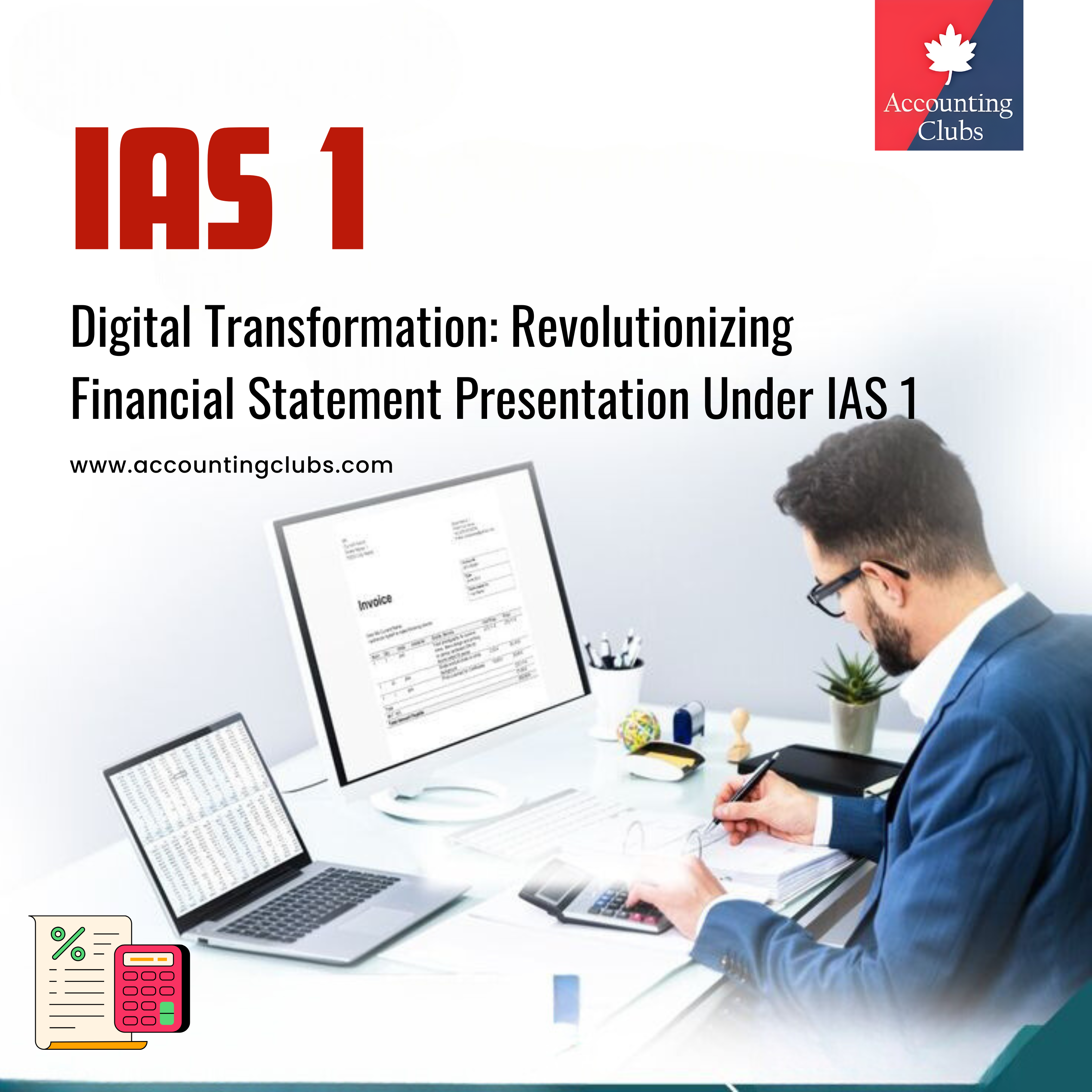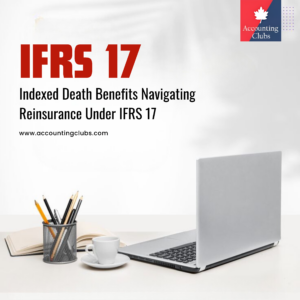Digital Transformation: Revolutionizing Financial Statement Presentation Under IAS 1

In the rapidly evolving landscape of accounting, digital transformation is reshaping how financial statements are prepared, presented, and interpreted. International Accounting Standard 1 (IAS 1), which governs the presentation of financial statements, is increasingly influenced by advances in technology and digital reporting tools. This article explores the profound implications of these changes on compliance with IAS 1 requirements and the enhancement of transparency in financial reporting.
Enhanced Data Management and Reporting Efficiency
One of the most significant impacts of digital transformation is the ability to manage vast amounts of data efficiently. Modern accounting software and enterprise resource planning (ERP) systems facilitate real-time data collection and processing, allowing organizations to generate financial statements with unprecedented speed and accuracy.For instance, companies can now automate the preparation of their Statement of Financial Position and Statement of Profit or Loss, ensuring that the figures presented are up-to-date and reflective of the current financial position. This automation not only minimizes human error but also enhances compliance with IAS 1 requirements by ensuring that all necessary data is captured and presented accurately.
Improved Transparency Through Digital Reporting Tools
Digital reporting tools, such as XBRL (eXtensible Business Reporting Language), enable companies to present their financial statements in a format that is easily accessible and understandable for users. XBRL allows for tagging financial data, making it machine-readable. This capability enhances transparency by allowing stakeholders to analyze financial statements more effectively.For example, when a company like Tech Innovations Ltd. publishes its financial statements using XBRL, investors can easily extract specific data points—such as revenue growth or changes in equity—without sifting through lengthy reports. This aligns with IAS 1’s emphasis on providing clear and comparable information to users.
Real-Time Financial Reporting
The advent of cloud computing has revolutionized how businesses approach financial reporting. Organizations can now provide real-time updates on their financial performance, which is particularly beneficial for stakeholders who require timely information for decision-making.This shift towards real-time reporting necessitates a reevaluation of traditional compliance practices under IAS 1. Companies must ensure that their systems are capable of continuously updating their financial statements while adhering to the standard’s requirements for structure and content.
Enhanced User Engagement Through Interactive Dashboards
Digital transformation has also led to the creation of interactive dashboards that allow users to engage with financial data dynamically. These dashboards can present key performance indicators (KPIs) alongside traditional financial statements, offering a more comprehensive view of an entity’s performance.For instance, a dashboard for Tech Innovations Ltd. might display not only the annual revenue figures but also trends over multiple periods, comparisons with industry benchmarks, and forecasts based on current data. This level of interactivity enhances user understanding and aligns with IAS 1’s objective to present information that is useful for making economic decisions.

Challenges in Digital Compliance
While digital transformation offers numerous benefits, it also presents challenges regarding compliance with IAS 1. The rapid pace of technological change can outstrip regulatory frameworks, leading to potential gaps in compliance. For example, as companies adopt new digital tools for reporting, they must ensure that these tools adhere to IAS 1’s requirements regarding materiality, aggregation, and presentation.Moreover, organizations must invest in training their staff to understand both the technological aspects of digital reporting tools and the accounting principles underlying IAS 1. This dual focus is crucial for maintaining compliance while leveraging technology effectively.
Digital reporting tools enhancing transparency in financial statements according to IAS 1
Digital reporting tools are significantly enhancing transparency in financial statements as outlined by International Accounting Standard 1 (IAS 1). This transformation is primarily driven by the adoption of technologies such as XBRL (eXtensible Business Reporting Language) and iXBRL (Inline XBRL), which facilitate the structured presentation of financial data. This article explores how these advancements improve compliance with IAS 1 requirements and foster greater transparency for stakeholders.
Structured Data Presentation
One of the most notable impacts of digital reporting tools is the ability to present financial data in a structured, machine-readable format. XBRL allows companies to tag their financial information, making it accessible and comparable across different entities. This structured approach aligns with IAS 1’s emphasis on clarity and comparability in financial reporting.
For instance, when a company prepares its Statement of Financial Position using XBRL, each line item is tagged according to standardized taxonomies. This means that investors can easily extract specific data points, such as total assets or liabilities, without having to navigate through lengthy reports. The IFRS digital taxonomies standardize this process, ensuring consistency and comparability across reports, which is a core requirement of IAS 1
Example: XBRL ImplementationMany companies have adopted XBRL (eXtensible Business Reporting Language) to tag their financial data. For instance, a multinational corporation like Unilever uses XBRL to prepare its financial statements, ensuring that each line item in the Statement of Financial Position is tagged according to standardized taxonomies. This allows investors and analysts to easily extract and compare specific data points, such as total assets or liabilities, across different reporting periods or against other companies.
Enhanced Comparability and Analysis
Digital reporting tools enhance the comparability of financial statements, enabling stakeholders to analyze data more effectively. With machine-readable formats, investors can perform automated comparisons between companies or across different reporting periods with ease. This capability is particularly beneficial in capital markets where timely and accurate information is crucial for decision-making.For example, regulatory bodies like the US Securities and Exchange Commission (SEC) have mandated the use of XBRL for public companies since 2009. This requirement has led to improved market oversight and transparency, as regulators can quickly access and analyze vast amounts of financial data
The result is a reduction in information asymmetry, allowing investors to make more informed decisions based on reliable data.
Example: SEC Mandate for XBRLIn the United States, the Securities and Exchange Commission (SEC) mandates that public companies file their financial statements using XBRL. This requirement has improved market oversight and transparency. For example, when a company like Apple Inc. publishes its quarterly earnings report in XBRL format, investors can quickly analyze key metrics such as revenue growth or changes in equity with just a few clicks, enhancing their ability to make informed investment decisions.
Real-Time Reporting Capabilities
The integration of digital tools also supports real-time financial reporting. Companies can update their financial statements continuously, reflecting their current financial position more accurately. This capability aligns with IAS 1’s requirement for timely presentation of financial information.For instance, if a company experiences significant changes in its revenue or expenses during a reporting period, digital tools enable it to adjust its financial statements promptly. This real-time capability enhances transparency by providing stakeholders with up-to-date information that reflects the entity’s current operational status.
Example: Cloud-Based Financial SystemsCompanies are increasingly using cloud-based financial systems that allow for real-time updates to their financial statements. For instance, a tech startup might use software like QuickBooks Online to continuously update its Statement of Profit or Loss as transactions occur throughout the month. This capability ensures that stakeholders have access to the most current financial information, aligning with IAS 1’s requirement for timely presentation.

Automation and Reduced Errors
Digital reporting tools automate various aspects of the reporting process, reducing the likelihood of human error. By automating data entry and validation checks, companies can ensure that the information presented in their financial statements complies with IAS 1 requirements regarding accuracy and completeness.Moreover, automated systems can flag discrepancies or inconsistencies in data before reports are finalized. This proactive approach not only enhances the integrity of the financial statements but also builds trust among stakeholders who rely on accurate information for their decision-making processes
Example: Automated Financial Reporting ToolsOrganizations like Deloitte utilize automated financial reporting tools that streamline the preparation of financial statements. These tools can automatically pull data from various sources, reducing manual entry errors. For example, if a company’s Statement of Cash Flows needs to be prepared, the tool can automatically aggregate cash inflows and outflows from different departments, ensuring accuracy and compliance with IAS 1.
Improved Accessibility
Digital tools enhance the accessibility of financial statements for users. Traditional paper-based reports are often cumbersome and difficult to navigate. In contrast, digital formats allow users to search for specific information quickly and easily.For example, when a company publishes its annual report in an interactive PDF or an online format using iXBRL, stakeholders can easily locate relevant sections or data points without having to sift through pages of text. This improved accessibility aligns with IAS 1’s goal of presenting clear and comparable information to users
Example: Interactive Annual ReportsCompanies are now creating interactive annual reports that allow users to navigate through financial data easily. For instance, Coca-Cola has developed an online annual report where stakeholders can click through different sections of the Notes to Financial Statements, making it easier to find specific information without sifting through pages of text. This format enhances user experience and aligns with IAS 1’s goal of providing clear and comparable information.
The integration of digital reporting tools into financial statement preparation is transforming how organizations comply with IAS 1 requirements while enhancing transparency for stakeholders. By facilitating structured data presentation, improving comparability and analysis, enabling real-time reporting capabilities, reducing errors through automation, and enhancing accessibility, these technologies are paving the way for a more transparent and efficient financial reporting landscape.As digital transformation continues to evolve, accounting professionals must stay abreast of these changes to leverage technology effectively while ensuring compliance with established standards like IAS 1.
Conclusion
The impact of digital transformation on financial statement presentation under IAS 1 is profound and multifaceted. As technology continues to evolve, so too will the methods by which organizations prepare and present their financial statements. By embracing these advancements, companies can enhance transparency, improve efficiency, and provide stakeholders with timely information that supports informed decision-making.As future accountants navigate this digital landscape, understanding the interplay between technology and accounting standards will be essential for ensuring compliance and fostering trust in financial reporting.











